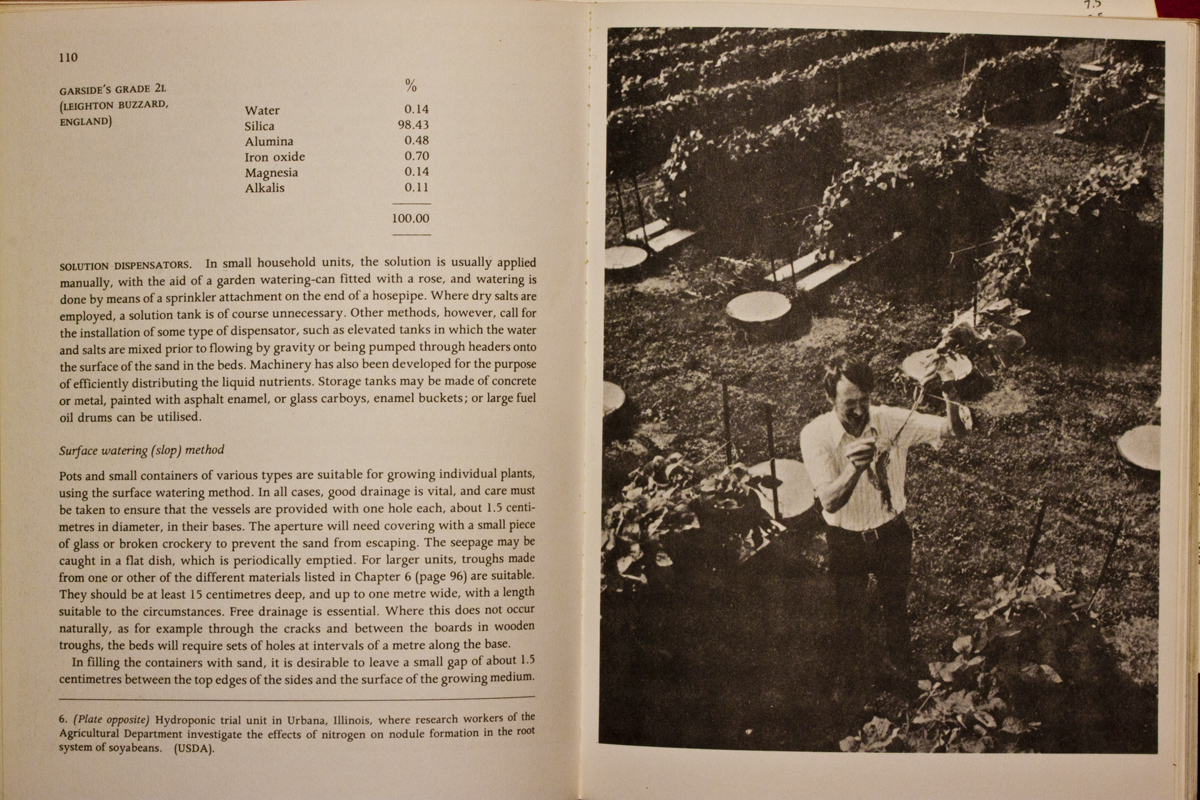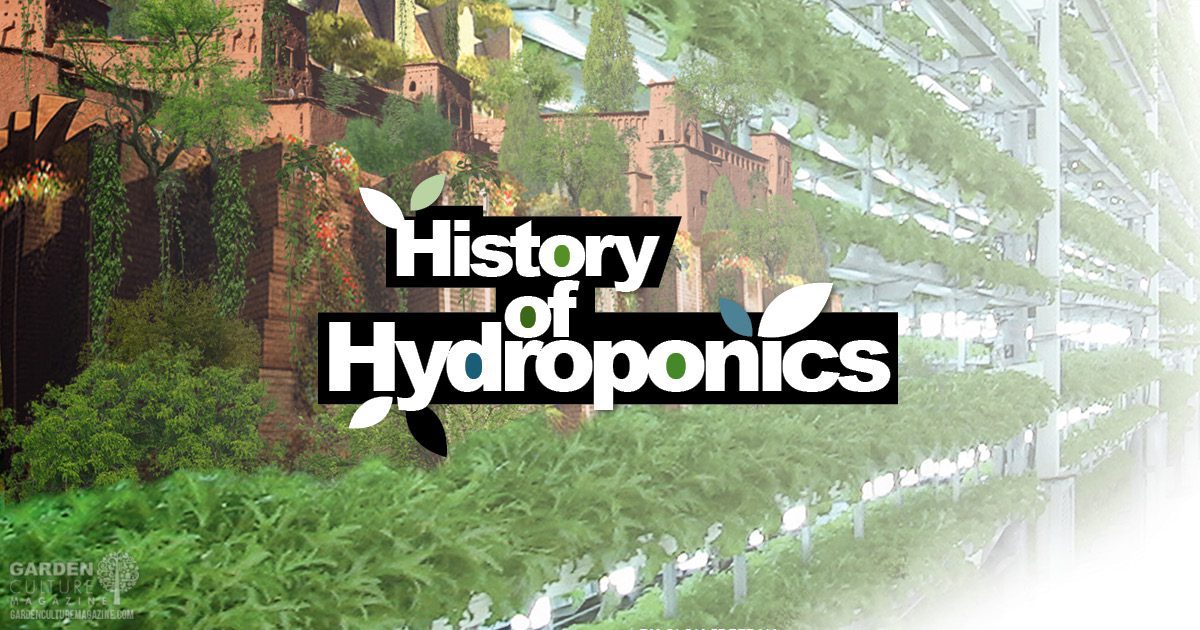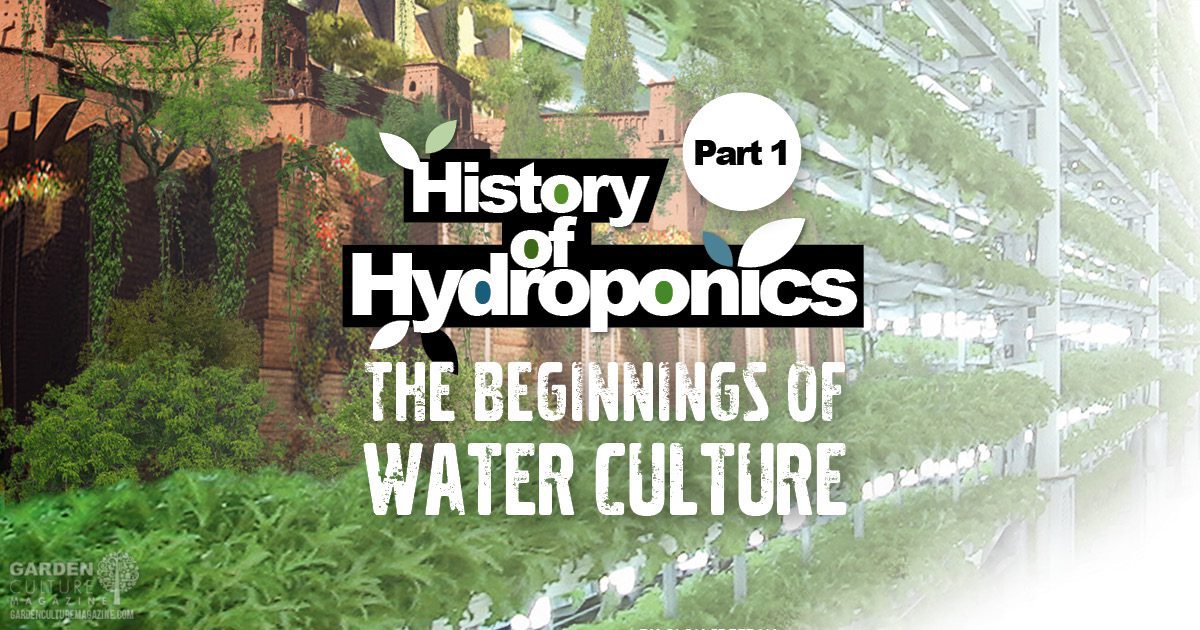Embark on a fascinating journey through the annals of hydroponics history, a tale that weaves together ancient practices, groundbreaking experiments, and modern advancements, shaping the future of sustainable agriculture.
From the Hanging Gardens of Babylon to cutting-edge aeroponic systems, hydroponics has evolved over centuries, offering a glimpse into the ingenuity and perseverance of those who sought to unlock the secrets of plant growth.
Ancient Origins
Hydroponics, the cultivation of plants in nutrient-rich water without soil, has its roots in ancient civilizations.
The Hanging Gardens of Babylon, built around 600 BC, are considered one of the earliest examples of hydroponics. The gardens were constructed on a series of terraces, with water drawn from the Euphrates River using a complex system of pumps and channels.
Egyptians
The Egyptians also practiced a form of hydroponics, using the Nile River’s annual flooding to irrigate their crops. They would plant seeds in baskets filled with sand or gravel, which were then placed in the water. As the water level rose, the roots of the plants would grow down into the baskets, absorbing nutrients from the water.
Chinese
The Chinese have been practicing hydroponics for centuries, with written records dating back to the 10th century AD. They used a system called “floating gardens,” where plants were grown on rafts made of bamboo or other materials that floated on the surface of ponds or lakes.
Early Experiments and Pioneers

Hydroponics has a long and fascinating history, with early experiments and pioneers laying the foundation for its modern development.
Some of the most notable early contributors to the understanding of plant nutrition and the role of light in plant growth include:
Francis Bacon and Jan van Helmont
Francis Bacon, an English philosopher and scientist, and Jan van Helmont, a Flemish physician and chemist, conducted experiments in the 16th and 17th centuries that helped to establish the importance of water and nutrients for plant growth.
Hydroponics, a technique of growing plants in water, has a long history. One of its most fascinating applications is in fish and plant farming , where fish and plants are raised together in a symbiotic relationship. By integrating these two systems, farmers can create a sustainable and efficient ecosystem that provides both food and nutrients.
Hydroponics has played a significant role in the development of this innovative farming technique, enabling the cultivation of plants in controlled environments without soil.
Van Helmont’s famous willow tree experiment, in which he grew a willow tree in a pot of soil for five years, watering it only with rainwater, demonstrated that plants gain most of their mass from water and not from soil.
Joseph Priestley and Jan Ingenhousz
Joseph Priestley, an English chemist and theologian, and Jan Ingenhousz, a Dutch physician and botanist, conducted experiments in the 18th century that shed light on the role of light in plant growth.
Priestley discovered that plants release oxygen during photosynthesis, while Ingenhousz showed that this process only occurs in the presence of light.
The 20th Century

The early 20th century witnessed significant advancements in hydroponics, leading to its widespread adoption in commercial agriculture.
William Frederick Gericke
William Frederick Gericke, an American plant physiologist, played a pivotal role in popularizing hydroponics. In 1929, he coined the term “hydroponics” and conducted extensive research at the University of California, Berkeley.
Commercial Applications, Hydroponics history
The commercial potential of hydroponics was recognized during the mid-20th century. Hydroponic systems were increasingly adopted by growers to produce high-quality crops in controlled environments, maximizing yield and minimizing resource consumption.
- Greenhouse Production:Hydroponics became a popular method for growing vegetables, fruits, and flowers in greenhouses, allowing for year-round production and optimal growing conditions.
- Vertical Farming:The concept of vertical farming, utilizing stacked layers of hydroponic systems, emerged as a space-efficient and sustainable solution for urban agriculture.
- Controlled Environment Agriculture (CEA):Hydroponics became an integral part of CEA systems, which provide precise control over environmental factors such as light, temperature, and nutrient supply.
Modern Techniques and Innovations

Modern hydroponic systems have evolved significantly, incorporating innovative technologies and advancements to enhance crop production. These techniques optimize plant growth and yield, enabling year-round cultivation in controlled environments.
Hydroponic Systems
Today, various hydroponic systems are employed, each with unique advantages. Deep water culture (DWC) immerses plant roots directly in a nutrient-rich solution, providing constant access to water and nutrients. Nutrient film technique (NFT) utilizes a thin film of nutrient solution that continuously flows over the roots, ensuring efficient nutrient absorption.
Aeroponics suspends plant roots in the air and delivers a nutrient mist, maximizing oxygen availability for rapid growth.
Nutrient Solutions and Growing Media
Advancements in nutrient solutions have led to precise formulations that cater to specific plant species and growth stages. These solutions provide essential macro- and micronutrients, ensuring optimal plant nutrition. Growing media have also evolved, with substrates like rockwool, perlite, and coconut coir offering tailored support and aeration for different plant types.
Automation and Technology
Modern hydroponic systems incorporate automation and technology to streamline operations and improve efficiency. Automated nutrient delivery systems maintain optimal nutrient levels, while environmental controllers regulate temperature, humidity, and lighting. Advanced sensors monitor plant growth and environmental parameters, providing real-time data for informed decision-making.
Applications and Benefits of Hydroponics
Hydroponics offers numerous applications in diverse settings, ranging from commercial agriculture to home gardening and even space exploration. This versatile technique provides significant advantages, including increased crop yields, efficient water usage, and controlled growing environments.
Applications of Hydroponics
The table below highlights the key applications of hydroponics in different settings:
| Setting | Purpose | Benefits | Examples |
|---|---|---|---|
| Commercial Agriculture | Large-scale crop production | Increased yields, year-round cultivation, reduced labor costs | Greenhouse cultivation of tomatoes, cucumbers, and lettuce |
| Home Gardening | Small-scale plant cultivation | Fresh produce, year-round gardening, space efficiency | Indoor cultivation of herbs, vegetables, and flowers |
| Space Exploration | Crop production in extraterrestrial environments | Closed-loop systems, limited resources, extended shelf life | NASA experiments on growing plants in space stations |
Benefits of Hydroponics
- Increased crop yields: Hydroponic systems provide optimal growing conditions, leading to higher yields compared to traditional soil-based farming.
- Water conservation: Hydroponics uses significantly less water than conventional farming methods, making it an eco-friendly option.
- Controlled growing environments: Hydroponic systems allow for precise control over environmental factors such as temperature, light, and nutrient levels, optimizing plant growth.
- Year-round cultivation: Hydroponics enables year-round crop production, regardless of seasonal variations or climate limitations.
- Reduced labor costs: Automated systems and efficient plant management techniques reduce labor requirements in hydroponic operations.
- Improved quality: Hydroponically grown crops often exhibit superior quality, with increased nutrient content and reduced susceptibility to pests and diseases.
Challenges and Future Prospects

Hydroponic cultivation presents certain challenges that require ongoing attention and innovation. One of the primary concerns is disease management. In a controlled environment, the spread of pathogens can be rapid and devastating. Therefore, implementing strict sanitation practices, using disease-resistant cultivars, and employing biological control agents are crucial to maintaining healthy crops.
Another challenge lies in nutrient balancing. Hydroponic systems require precise control over the nutrient solution to ensure optimal plant growth. Monitoring pH levels, nutrient concentrations, and the overall balance of essential elements is critical to prevent nutrient deficiencies or toxicities.
Future Developments and Innovations
The future of hydroponics holds immense promise for advancements and innovations. Researchers are exploring new technologies to enhance crop yield, reduce water consumption, and improve nutrient efficiency. These include:
- Vertical farming:Utilizing vertical space to maximize crop production in urban areas.
- Aeroponics:Growing plants in a mist of nutrient-rich water, reducing water consumption and disease risks.
- Artificial intelligence (AI):Employing AI algorithms to optimize nutrient delivery, monitor plant health, and predict crop yields.
- Precision irrigation:Using sensors to monitor soil moisture levels and adjust irrigation schedules accordingly, reducing water waste.
Role in Global Food Security and Sustainability
Hydroponics has a significant role to play in addressing global food security and sustainability. By enabling crop production in controlled environments, it can mitigate the challenges of climate change, water scarcity, and soil degradation. Hydroponic systems can produce high yields of nutritious crops year-round, regardless of external environmental conditions.
Furthermore, hydroponics promotes sustainable agriculture practices. It conserves water resources by using closed-loop systems and reduces the need for chemical fertilizers and pesticides. By minimizing environmental impact and maximizing crop production, hydroponics contributes to a more sustainable and food-secure future.
Last Recap
As hydroponics continues to push the boundaries of agricultural innovation, its potential to address global food security and sustainability remains immense. The lessons learned from its rich history serve as a testament to the transformative power of human curiosity and the endless possibilities that lie ahead.
Query Resolution: Hydroponics History
What is the oldest known form of hydroponics?
The Hanging Gardens of Babylon, built around 600 BC.
Who is considered the “father of hydroponics”?
William Frederick Gericke, who popularized the term “hydroponics” in the early 20th century.
What are the main benefits of hydroponics?
Increased crop yields, water conservation, and controlled growing environments.
